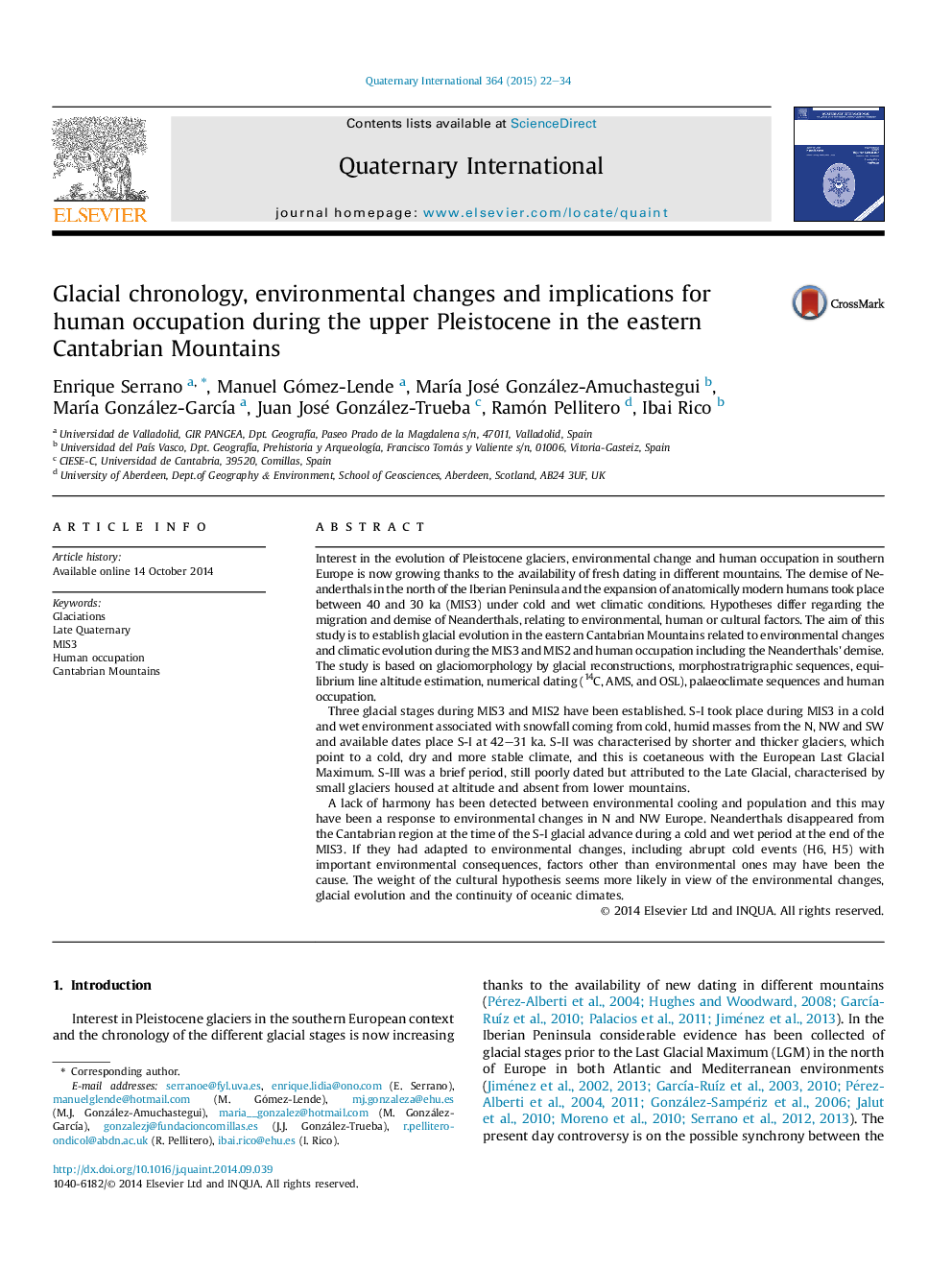| کد مقاله | کد نشریه | سال انتشار | مقاله انگلیسی | نسخه تمام متن |
|---|---|---|---|---|
| 1040869 | 1484133 | 2015 | 13 صفحه PDF | دانلود رایگان |
Interest in the evolution of Pleistocene glaciers, environmental change and human occupation in southern Europe is now growing thanks to the availability of fresh dating in different mountains. The demise of Neanderthals in the north of the Iberian Peninsula and the expansion of anatomically modern humans took place between 40 and 30 ka (MIS3) under cold and wet climatic conditions. Hypotheses differ regarding the migration and demise of Neanderthals, relating to environmental, human or cultural factors. The aim of this study is to establish glacial evolution in the eastern Cantabrian Mountains related to environmental changes and climatic evolution during the MIS3 and MIS2 and human occupation including the Neanderthals' demise. The study is based on glaciomorphology by glacial reconstructions, morphostratrigraphic sequences, equilibrium line altitude estimation, numerical dating (14C, AMS, and OSL), palaeoclimate sequences and human occupation.Three glacial stages during MIS3 and MIS2 have been established. S-I took place during MIS3 in a cold and wet environment associated with snowfall coming from cold, humid masses from the N, NW and SW and available dates place S-I at 42–31 ka. S-II was characterised by shorter and thicker glaciers, which point to a cold, dry and more stable climate, and this is coetaneous with the European Last Glacial Maximum. S-III was a brief period, still poorly dated but attributed to the Late Glacial, characterised by small glaciers housed at altitude and absent from lower mountains.A lack of harmony has been detected between environmental cooling and population and this may have been a response to environmental changes in N and NW Europe. Neanderthals disappeared from the Cantabrian region at the time of the S-I glacial advance during a cold and wet period at the end of the MIS3. If they had adapted to environmental changes, including abrupt cold events (H6, H5) with important environmental consequences, factors other than environmental ones may have been the cause. The weight of the cultural hypothesis seems more likely in view of the environmental changes, glacial evolution and the continuity of oceanic climates.
Journal: Quaternary International - Volume 364, 7 April 2015, Pages 22–34
